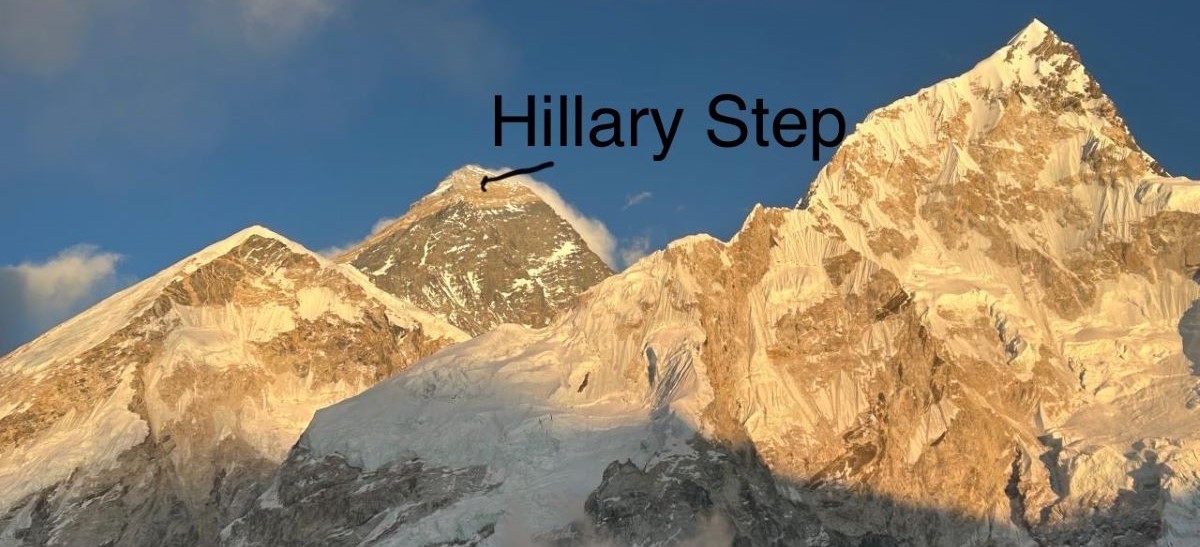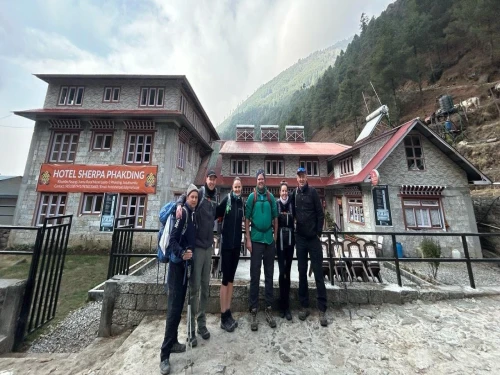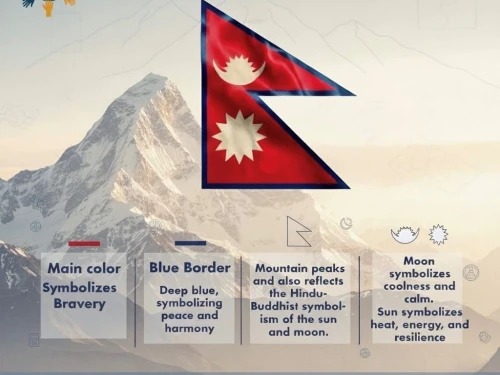Challenges on The Hillary Step
Getting through the Hillary Step was said to be one of the most difficult parts of the Everest expedition. Steep and narrow, this passage was at around 8,790 meters, almost at the top of the world. Due to the width of the route, only one climber could pass at a time. This frequently caused long delays on clear, sunny days in the presence of a massive queue. Although short, it felt exceedingly tough under those conditions.
The weather was bitter and unrelenting, and the winds were so ferocious and freezing that they cast a veil of danger on the climbing. Moreover, this area is in the death zone, where the air is thin and hard to breathe. At this stage, climbers mostly need to use bottled oxygen just to carry on with the climb.
By the time one was at the base or negotiating the Hillary Step, they would have been feeling pretty tired and usually depleted of nutrients. Body and mind were under immense pressure. This was a very short stretch, but the altitude, cold, and exhaustion equated to a grueling challenge, a last trial before touching Mt. Everest's summit.
What has changed for climbers since the Hillary Step was altered?
The 2015 earthquake changed the Hillary Step, and climbers and guides remain divided on the issue. Some say that it is easier now. Others say that it is just as risky, in a different way.
Before 2015, the Hillary Step consisted of a very steep rock wall. Climbers had to employ technical rock-climbing skills and ropes in painstaking efforts to ascend the rocks. It was one of the last, if not the last, hard climbs. Since then, it resembles more of a snowy slope than a rocky wall and hence is less technical and easier to climb for many.
Does this, however, mean it is any safer? Nevertheless, snow and ice are slippery and unstable. With many climbers attempting to ascend simultaneously, one slipping or even the smallest snow slide becomes extremely likely.
One thing that has changed is the climbers no longer have to scramble over rock, as the Hillary Step has now been softened. However, few climbers feel that they lie in thin air, strong winds, and tired bodies. Ropes will be fixed to aid the progress, but hard remains the climb, both physically and mentally.
Simply put, the Hillary Step is no longer what it was, but the danger remains. It acquired a new form of challenge that is just as present as before.
Hillary Step: Before and After 2015 Earthquake
Hillary Step: Before the 2015 Earthquake
Before the earthquake of 2015, the Hillary Step was basically a tall, steep rock wall, about 12 meters (40 feet) high. It was almost vertical and thus very difficult to climb, especially at such an altitude. Climbers needed to rope themselves up, as well as the aid of ice axes and climbing gear.
One of the most dangerous sections of the entire Mount Everest climb, the narrow space also created a risk because of the strong winds blowing through it. With only space for one person to ascend or descend at any given moment, mounting congestion would build up. For the international ones, a mere few steps were a huge wall between the summit and them, considering they had already been breathing on low oxygen and at the highest predisposition to exertion.
Hillary Step: After the 2015 Earthquake
Soon after the earthquake in Nepal in 2015, multiple climbers reported that the Hillary Step had changed. It was said or believed that it had collapsed or it had become a rocky slope with no semblance of the famous sheer rock face it once was.
This change in a way made the ascent easier technically, for it was no longer a vertical wall. But this change also brought with it new dangers. Loose rock and slippery ground are dangerous indeed, particularly if it is bad weather.
These changes were considered with mixed feelings in the climbing community. Some felt glad that it was easier to cross, while others mourned the passing of one of Everest's most famous and iconic features. It was very much a piece of the mountain's history and was deeply felt in its loss.
How Long Does It Take to Climb the Hillary Step?
The climb used to normally require around 10 to 30 minutes to ascend the Hillary Step, depending on the weather, the climber's fitness, or how many people showed up on the mountain that day.
It was common for people on summit days to have to wait full days, standing for hours in lines, with others wanting to make a quick approach to the summit. Experienced climbers could be put through a forced downtime in the queue for as long as an hour or two before even attempting to climb the step.
Now that the step has degenerated into more of a rocky slope, it can be crossed more quickly; hence, it does not pose the technical difficulty that it did in the past. But it is still dangerous, especially with loose rocks and a high altitude. Even with it taking less time now, the climbers still have to exercise great care and be concentrated at this stage.
The Deadly Side of The Hillary Step
The Hillary Step is near the summit of Mount Everest in an area called the "death zone" above 8,000 meters. There is barely any oxygen at these heights, and the body starts weakening on its own. It becomes difficult to breathe, think straight, or maintain any activity over a stretch of time.
Hence, the vicinity has claimed some lives, especially near the Hillary Step. These climbers were either utterly exhausted or out of oxygen, or they had simply become too weak to continue. At this altitude, a single error or a delay is equal to a death sentence. Both the cold and wind pose an equally life-threatening challenge.
One of the famous bodies known as "Green Boots" lies on the Everest routes. Not exactly on the Hillary Step, these bodies nonetheless demonstrate the extent to which areas near the summit are dangerous. Conditions are so unfavorable, and rescue attempts so impractical, that bodies are seldom brought down from there. They stand there, eerie, silent testimony to the hazards that the Everest expedition embodies.
Final Thought
The Hillary Step is still remembered as one of the major steps one has to scale in the act of mounting Everest. While slightly modified after the earthquake, it is still the final and most difficult stretch before touching the roof of the world.
Any climber needs to exhibit caution, balance, and good strength to cross this section. On the contrary, the thin, cold air and the altitudinous level make it a whole lot of a challenge, whether the step is a steep rock face or a graded rocky slope.
Thought of as more than just another trail alignment, the Hillary Step stands as a symbol for the courage, determination, and history that every climber carries with him toward the summit. It reminds all that climbing Everest is not just about reaching the top; it is also about the journey and the few who have made it possible.




 4 reviews
4 reviews.webp)



